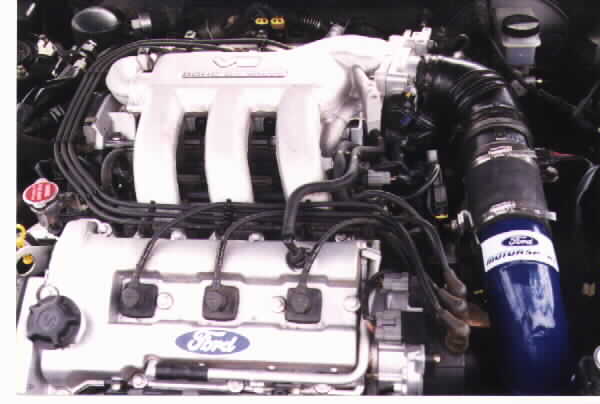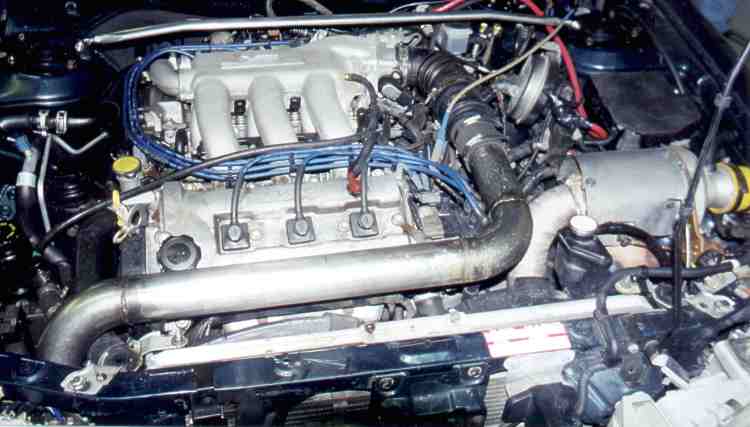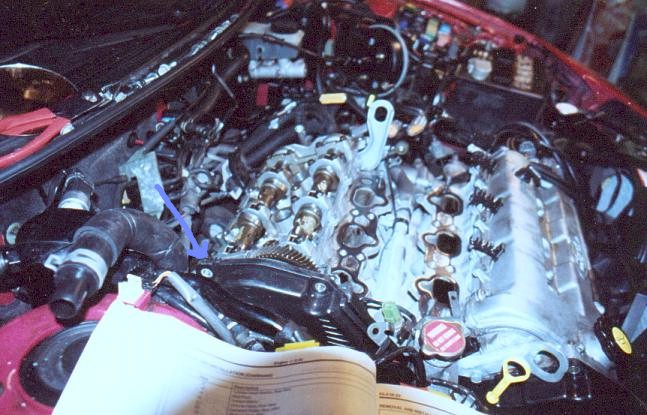A Addco Rear Sway Bar 22mm (7/8") bar made by Addco (Florida), P/N699. Available at J.C. Whitney for under $100 US. Also see Sway Bars Air Filters
Cone filters are a popular performance upgrade. K&N cone filters are the most common. A K&N RE910 or the
smaller RE930 will fit right over the VAF, but this is not the best installation method as the engine will be breathing
hot air. A Hotshot cold air tube will draw air from below the splash guard. It works great but water ingestion is a risk. Some have made home-made cold air tubes... The K&N, RS Akimoto and others use a cotton gauze element soaked in oil to trap dirt. They are relatively cheap ($60 CDN) and work very well.
I own two cone filters -- an RS Akimoto Funnel Ram, and a K&N RE910. Some rough measurements yielded the following filter media area measurements:
Owner of a custom turbo '94(+/-) Mazda 626. The turbo system was built by MRU of Mississauga, Ontario. His
system consists of a T3 Super60-trim turbocharger, and a RX-7 intercooler. All the piping is stainless steel and
looks great. The A/F ratio still needs some tuning, but so far with 7psi of boost the 626 has put out 217HP at the wheels.
Simply take a 0.100" panel of solid aluminum (got mine at work, for free) and cut to the desired shape using a
The only source for turbo and supercharger kits (thus far) for the Mazda 2.5L V6. Here's an e-mail I received from Mr.
ATS Turbo himself, Geoff Knight. I've heard that he is great to talk to. ATS has been recently renamed TKT. Axxis MetalMaster Brake Pads
In winter (Toronto winter, that is), these pads never reach their optimum temperature under normal driving B Brake Pads
High performance brake pads offer two benefits: 1) higher fade resistance, and 2) a higher coefficient of friction. Most
brake pads have a coefficient of friction of about 0.3. The Porterfeld RS4 pads (street version) have a COF of about
0.5, the racing version slightly higher. A higher COF results in reduced braking effort. Axxis Metal Masters I'm guessing have a COF of 0.4. All figures are for warmed up pads. Breather Tube When replacing the airbox with a cone filter or intake tube, a filter must be fitted over a small breather tube that formerly plugged into the airbox. The simplest and most economical way to do this is to purchase a small conical fuel filter and simply slip it over the tube. The filter I use is is 0.3" in diameter and 1.5" long. Light oil can be applied to increase filter efficiency.
Replacement batteries tend to be more expensive for our vehicles. If your battery dies, instead of buying an OEM
replacement, get a cheaper, more powerful off-the-shelf battery (try 800 cold cranking amps) and mount it in the trunk.
My setup has about 20 ft of 4-gauge cable running through a grommet in the firewall along the door sill. A marine
battery case is strapped to the floor of the trunk immediately behind the fold-down seat. It is a good idea to have a fuse connecting the positive battery terminal. C Camshaft Cover Gaskets Often the cause of oil leaks and damaged plug leads, the cam cover gaskets on the 2.5L V6 will need to be replaced at
least once during the life of the engine. The front cam cover is not a big deal to get at, but the rear is buried under the
VRIS intake casting. If you're going to replace the front and/or rear gaskets, replace the friction gear spring on the exhaust camshaft too. It's only about 20 more minutes of labour. Cat-Back Refers to the part of the exhaust system from the catalytic converter rearwards. The stock exhaust is nice and quiet. Aftermarket systems like the Greddy or Borla are great and will net about 5-10HP at the wheels. A custom bent system with a straight through muffler (like my Magnaflow) are very affordable and a great bang for the buck.
D Dan has a turbo on his 2nd gen Probe GT. Dan is running 9psi on the stock engine. Check out Dan's page... Dynamometer (Dyno) Dynojet seems to be the most popular dyno system out there. For great dyno plots of the Mazda 2.5L V6, check out Dan Dunhem's page... http://www.superford.org/pgtpwr/home.html .
see Sway Bar Dunlop D40M2 Tires
In Toronto, the best deal around is at Public Tire. These guys even send you a 'Thank You' card in the mail!
|






